
Last week he examined the season 3 episode “Kissed by Fire” and today he’ll walk down Memory Lane with us through the season 4 instant classic, “The Lion and the Rose.” Please welcome back Manu! -Sue the Fury
“It’s just wine,” Tyrion explains to his older brother, as Jaime spills the contents of his goblet all over Tyrion’s solar. The line remembers a mostly-forgotten conversation from season one, when Ser Loras Tyrell educates Renly Baratheon on the rules of war. “It’s just blood,” he says, “Sometimes, a little spills.”
Fitting, perhaps, that wine and blood comingle to create the first pivotal moment of Game of Thrones season four; in “The Lion and the Rose,” the reign of cruel King Joffrey comes to a sudden and horrific end.
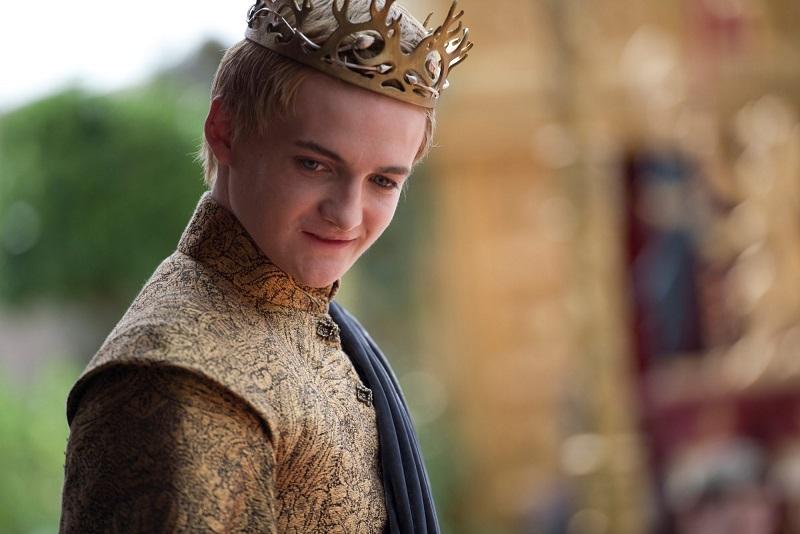
Joffrey, of houses Baratheon and Lannister, has been one of our epic’s first and foremost antagonists. From the death of Lady to Ned Stark’s beheading to the Northern secession, Joffrey’s existence has been the bane of the saga’s most beloved protagonists. It would logically follow that his death would be a cathartic victory; instead it comes not without cost and consternation. The realm is rid of one of its most vile monsters, human or otherwise, but Joffrey’s death creates only more uncertainty for our protagonists while plunging the realm even further into war and ruin.
Tyrion Lannister and Sansa Stark are our two “heroes” who face the most immediate challenges in the wake of the boy king’s end. While madness and chaos ensues around the royal corpse, the lioness of House Lannister quickly pounces on her younger brother, who in all his confusion is left holding the murder goblet. Cersei orders the Kingsguard to seize the dwarf as she sheds tears for her fallen son. Even this soon, imprisonment and execution appear to be on Tyrion Lannister’s horizon.
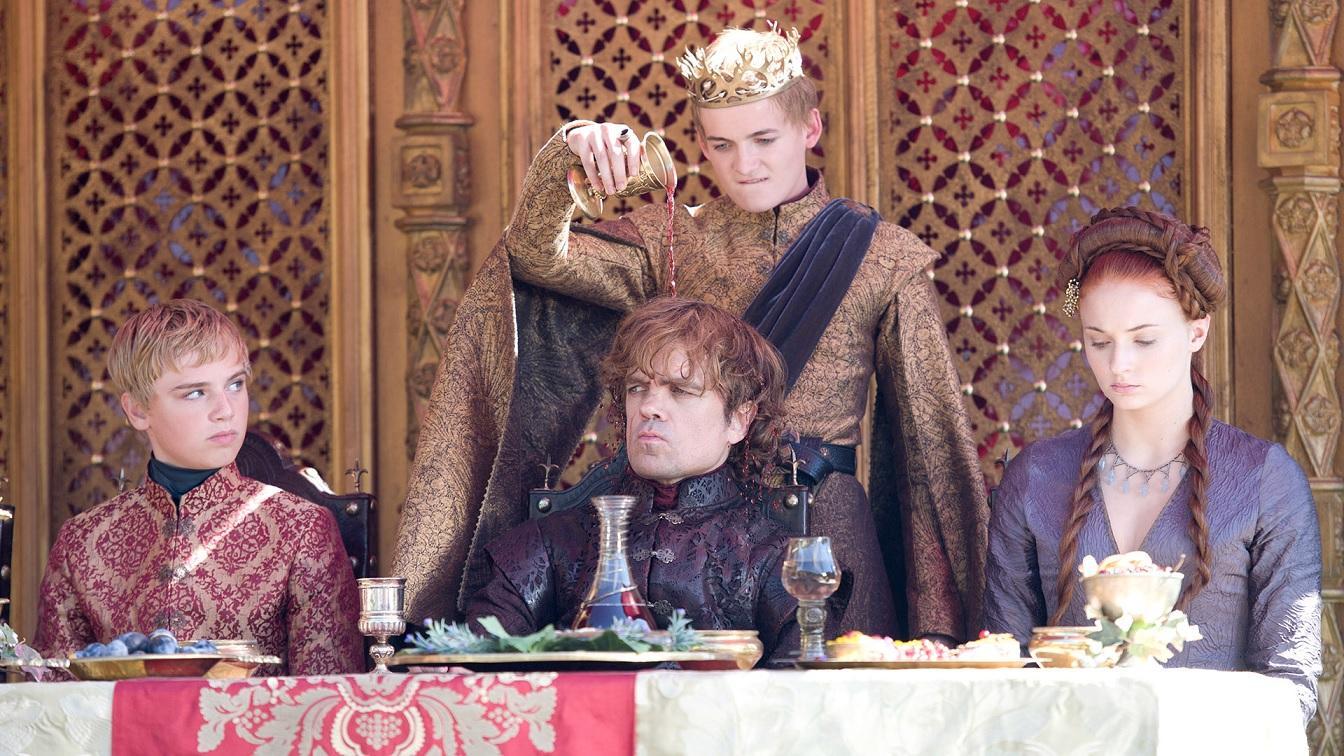
The fate of the eldest Stark daughter is a bit more uncertain, as she is last seen being hurried away by Ser Dontos, the fool who had bestowed a necklace on her the episode prior (the necklace, notably, short an amethyst following an earlier chat with Olenna Tyrell). Despite not having been the physical victim of Joffrey’s antics at the wedding, Sansa’s pain leading into these moments cuts far deeper as Joffrey had forced her to endure a folly of the War of the Five Kings, depicting the maiming of her brother and King in the North (earlier during the Purple Brunch, Joffrey can’t resist mention Ned Stark’s execution as well).
While the fate of Sansa, Tyrion, and the realm is unclear, what truly makes Joffrey’s death a Pyrrhic victory is the horror of the death itself. The repeatedly-beaten horse is that this series constantly undermines tropes that define high fantasy; here too, that subversion shines brightly. As mentioned, Joffrey has inflicted suffering on Westeros writ large and small; from war to hunger to death, the bastard son of the Lannister twins had wrought his own apocalypse on this story. His death, then, should be celebratory.
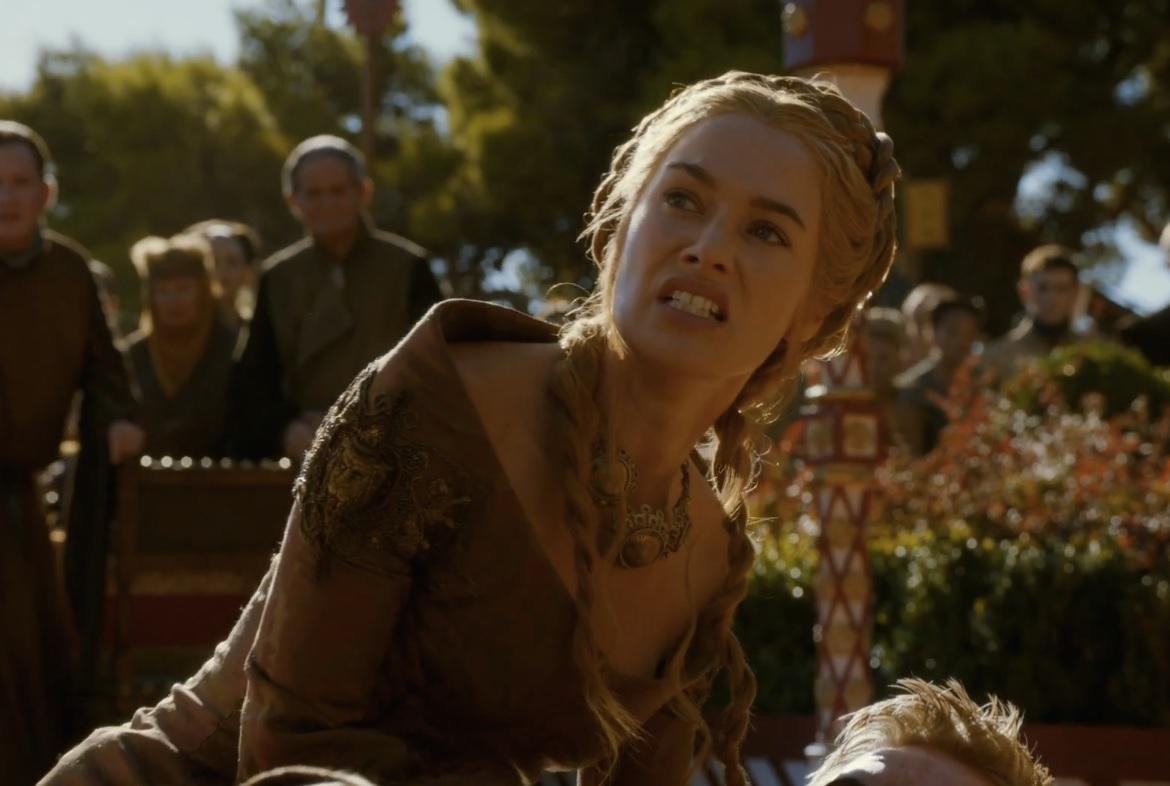
Rather, the audience bears witness to an altogether dreadful act, as Joffrey is slowly strangled by the poison in the arms of his parents ( one of which he never could truly acknowledge). As he claws at his throat, the despotic ruler is melted away and all that remains is a frightened boy; unsure of what is happening, but certain of his fate. And nothing shakes our emotional core more than his mother’s eyes and pleas. Cersei is not blind to her son’s monstrosity, but he has always remained her son, and every last ounce of her love comes out in her tears and shrieks.
The political fallout of Joffrey’s death is double-edged; the death of a ruler inherently creates further instability, and opens up opportunities for other would-be players to make their own machinations for the throne. However, the end of Joffrey does not fundamentally alter the power structure left in King’s Landing. Tywin Lannister still is the ultimate power, with Cersei and much of the small council is still as it was. Tommen, the heir to the throne, may be but a child, but he’s also not the stubborn monster his older brother was. Compare this to the Red Wedding, where the betrayal of Robb Stark not only ended his life, but also the Northern rebellion and the Stark’s reign thereof. Robb’s death meant the end of hope for a just king in Westeros; Joffrey’s death may end up further entrenching the schemers already atop.
In the wake of the episode, much analysis and reaction focused in on Joffrey’s death (and the “whodunit” that followed); it’s worth noting the spectacle that the Purple Wedding provided prior to this moment. Nearly every character in King’s Landing makes an appearance, providing wonderful opportunities to show interactions between characters we had seen little and less of before. D&D’s choice to have Brienne and Jaime return to the capital in time for the wedding paid dividends here, as we were able to witness pointed conversations between Jaime and Loras and later Brienne and Cersei. The latter conversation was illuminating for Cersei, as she not only learned that Jaime had saved Brienne, but that Brienne harbored feelings for him as well. All of this is done with Cersei’s normal needling manner, as she ridicules Brienne for bowing and for her fleeting allegiances to Renly and Catelyn Stark. This doesn’t go unnoticed by Jaime, and likely factors into his later decision to send Brienne from the city.

If Cersei was on the giving end above, then she was equally needled by the Prince of Dorne, Oberyn Martell. The Red Viper, along with his paramour Ellaria, engage Cersei and her lord father on the traditions that distinguish Dorne from the other kingdoms. Oberyn pointedly makes reference to the slain children of his sister (slain at Tywin’s command, it is believed) while reminding Cersei, not without a hint of menace, that her daughter Myrcella is currently a ward down in Sunspear.
All these conversations are fraught with tension, and create a sense of surmounting dread as the wedding endures. Knowing, hate-filled glances shoot between the guests as Joffrey unleashes his dwarf reenactment of the War of the Five Kings, one that goes so far as to openly mock his bride’s family. From Varys to Oberyn to the Tyrells to Tyrion and Sansa, every guest in attendance has a reason for wanting Joffrey dead. And as the king’s antics grow more malicious as he consumes more and more wine, the question becomes when, not if, some misfortune would befall him. Witness the craft of the filmmakers here, as the score carries an ominous tone and lengthier shots between cuts are employed to create the sense of foreboding doom.
The Purple Wedding represents a few important landmarks as it relates to the saga as a whole, and specifically as a structured TV show. The War of the Five Kings, spanning roughly the first four seasons (and first three books), is essentially the first act of A Song of Ice and Fire, climaxing with the Red and Purple Weddings. The denouement that follows is fallout from the war as the story pivots into its second act; the death of Tywin Lannister, the trial and flight of Tyrion Lannister, Stannis’s arrival at the Wall, and the ascension of Jon and Daenerys at their respective ends of the world.
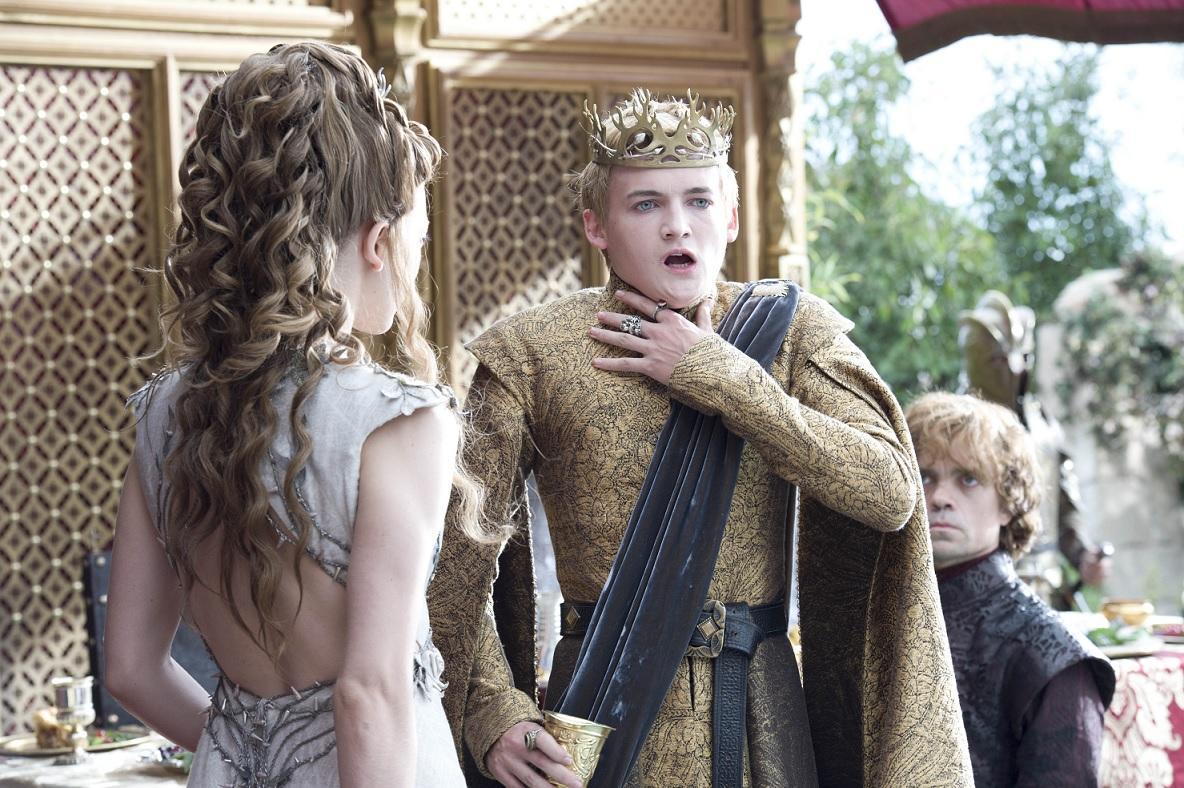
This episode also marks a paradigm shift in the television program, as a ground-shaking moment comes earlier than ever before. The three prior seasons generally had slower builds, providing minor climaxes in the fourth episode and seasonal climaxes in episode 9 (season 3, for example, featured the sack of Astapor in episode 4 and the Red Wedding in episode 9).
Season 4, however, betrays this format. Given that we are in the climax of the first act, moments this cataclysmic cannot be delayed. Indeed, we are amidst a season that will feature climactic arcs throughout: the Mountain and the Viper, the death of Lysa Arryn, the ascension of House Bolton, among others. The Stark daughters will head to uncharted territory, the eldest remaining Stark son seeks a wizard beyond the Wall, and the family bastard aims to save the realm from the oncoming army of the dead. The Purple Wedding is just the first pebble in what will be an avalanching fourth season of Game of Thrones.
A Few Extra Ravens
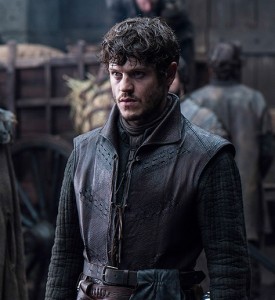 I really wanted to focus in on the Royal Wedding, both thematically and structurally, but the scenes at the Dreadfort are worthy of an equally lengthy dissection. Our season’s first glimpse of the Boltons and the newly-minted Reek is a telling one; showing how subservient and wretched the once son of Pyke has become. The fact that Reek is allowed to freely run behind Ramsay’s hunt informs us that he is unable to flee his captor, as his body and mind are too broken to betray the Bastard of Bolton. Later, on being informed of the death of Robb Stark while shaving Ramsay’s neck, Reek foregoes any sort of vengeance as he allows the murder of his best friend to wash over him. Even with his defining parts removed and little to live for, he still fears crossing his master as any revenge pales in comparison to the punishment he fears.
I really wanted to focus in on the Royal Wedding, both thematically and structurally, but the scenes at the Dreadfort are worthy of an equally lengthy dissection. Our season’s first glimpse of the Boltons and the newly-minted Reek is a telling one; showing how subservient and wretched the once son of Pyke has become. The fact that Reek is allowed to freely run behind Ramsay’s hunt informs us that he is unable to flee his captor, as his body and mind are too broken to betray the Bastard of Bolton. Later, on being informed of the death of Robb Stark while shaving Ramsay’s neck, Reek foregoes any sort of vengeance as he allows the murder of his best friend to wash over him. Even with his defining parts removed and little to live for, he still fears crossing his master as any revenge pales in comparison to the punishment he fears.
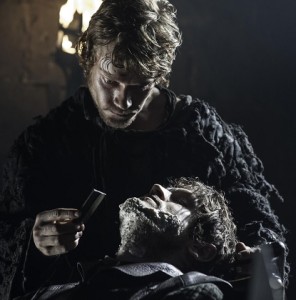 These scenes are especially intriguing given the episode was written by George R.R. Martin himself. Reek’s deterioration in the books is told after the fact through hazy flashbacks; here Martin is allowed to breathe life into the flashbacks to show just how decrepit Theon Greyjoy had become. Theon’s presence in the story represents another subversion of the fantasy genre, and more specifically echoes the story of Gollum from Lord of the Rings. While Tolkein’s pitiful creature is corrupted by magic, Martin tells a more human, visceral story as it is not magic and temptation that morphs his character, but the extremes of human cruelty and brutality. Gollum is stripped of name and vivacity by the power of the One Ring; Reek is created at the knife and whim of Ramsay Snow.
These scenes are especially intriguing given the episode was written by George R.R. Martin himself. Reek’s deterioration in the books is told after the fact through hazy flashbacks; here Martin is allowed to breathe life into the flashbacks to show just how decrepit Theon Greyjoy had become. Theon’s presence in the story represents another subversion of the fantasy genre, and more specifically echoes the story of Gollum from Lord of the Rings. While Tolkein’s pitiful creature is corrupted by magic, Martin tells a more human, visceral story as it is not magic and temptation that morphs his character, but the extremes of human cruelty and brutality. Gollum is stripped of name and vivacity by the power of the One Ring; Reek is created at the knife and whim of Ramsay Snow.
Bran and company make their first appearance of the season as well, and we get our first inklings about Bran’s journey to come. Upon connecting with a weirwood tree, Bran receives a flurry of premonitions showing the past, present, and possible future of the Seven Kingdoms. Many of these shots are familiar; Ned Stark, the three-eyed raven, Bran’s fall, and wights. Three parts specifically stick out; two of which have come to pass on the show since this episode. We get a glimpse of the Night’s King from the upcoming episode “Oathkeeper,” where we see it turn the last son of Craster into a White Walker. We additionally get a shot of the tree and cave that hides the Three-Eyed Raven, which is Bran’s destination this season (and the setting for a battle with the wights). Lastly, and most intriguing, is of course the shot of a dragon shadow flying over King’s Landing. The show may still be a season or two away from Dany’s arrival in Westeros, but it will be interesting to see if we will see this same exact image when she does come.
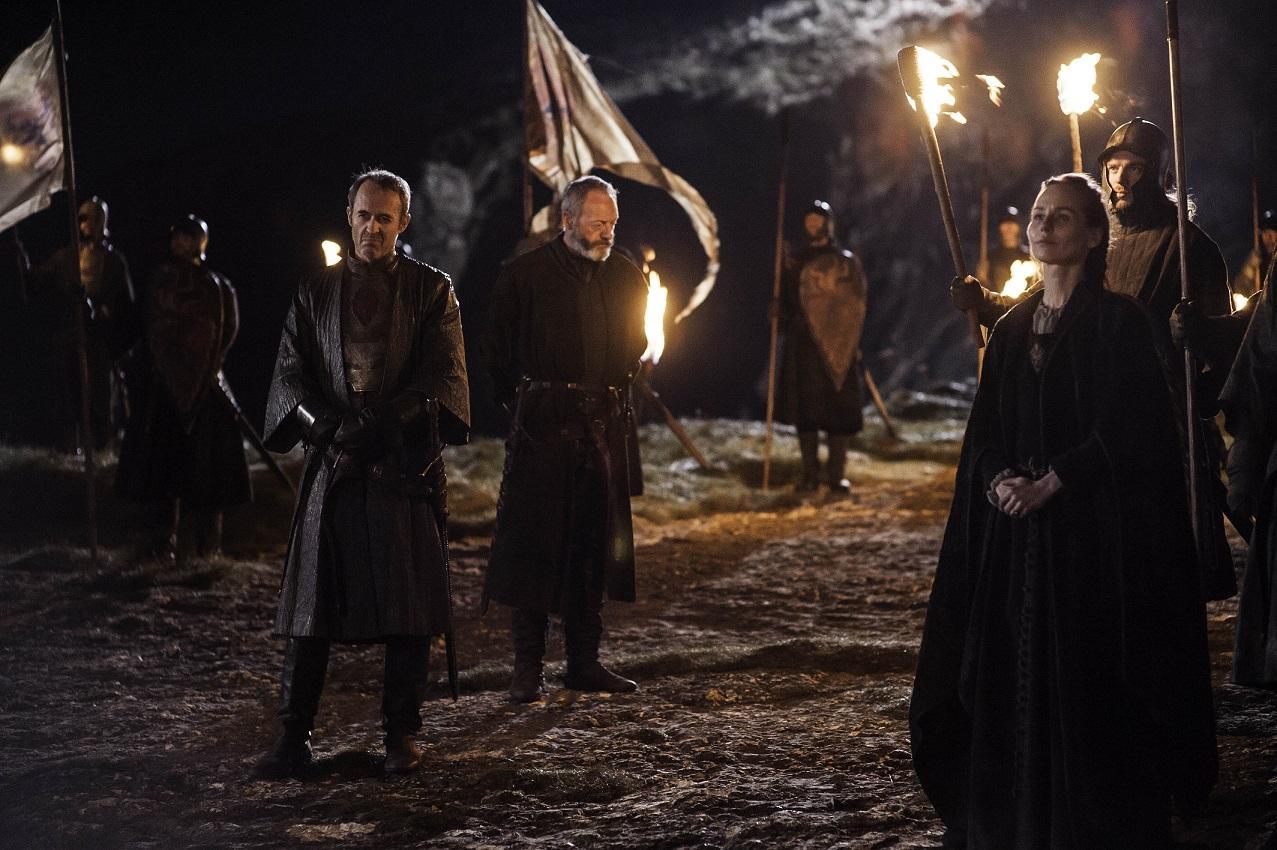
And Team Dragonstone makes its own season debut doing what it does best: burning people and giving ominous, creepy speeches. For a variety of reasons, many fans were not happy with the turn Stannis took in season five, specifically those who were “rooting” for Stannis in the story (Stannis stans, if you will). While this is not the place for a referendum on the moral quality of Stannis Baratheon, it should be noted that he has burned men on rather flimsy grounds throughout the narrative. While his burning of Shireen may have stretched the limits of his character, it did not step out of those bounds.
From a writing standpoint, the more offputting decision is Stannis’s lack of urgency regarding the war up north. Season three ends on a turning point for the remnants of House Baratheon; Davos and Melisandre had convinced the king that his destiny lies at the Wall, but here we find him burning men and having supper. There is passing discussion of the strength of Stannis’s army, but not enough dialogue given the Doom that Stannis had presumably foreseen in the flames.
Introductions: We meet Roose Bolton’s Frey bride, Walda (referred to as “Fat Walda”). The oafish lord of Highgarden, Mace Tyrell, also makes his debut during the royal brunch. Tansy, the girl Ramsay and Myranda hunt down, and Ser Axell Florent, Stannis’s sacrifice, make their first appearances and departures as well. And while not his first appearance, Tommen Baratheon makes his first appearance since being recast with Dean-Charles Chapman taking over the role.
Deaths: King Joffrey, and the just-mentioned Tansy and Ser Axell Florent.
Icelandic band Sigur Rós recorded a new version of “The Rains of Castamere” for “The Lion and the Rose.” They also cameoed as the Westerosi band singing a simple version of the song at the wedding reception in this episode.
“What good is an empty cup?” Joffrey’s Beautiful Death:
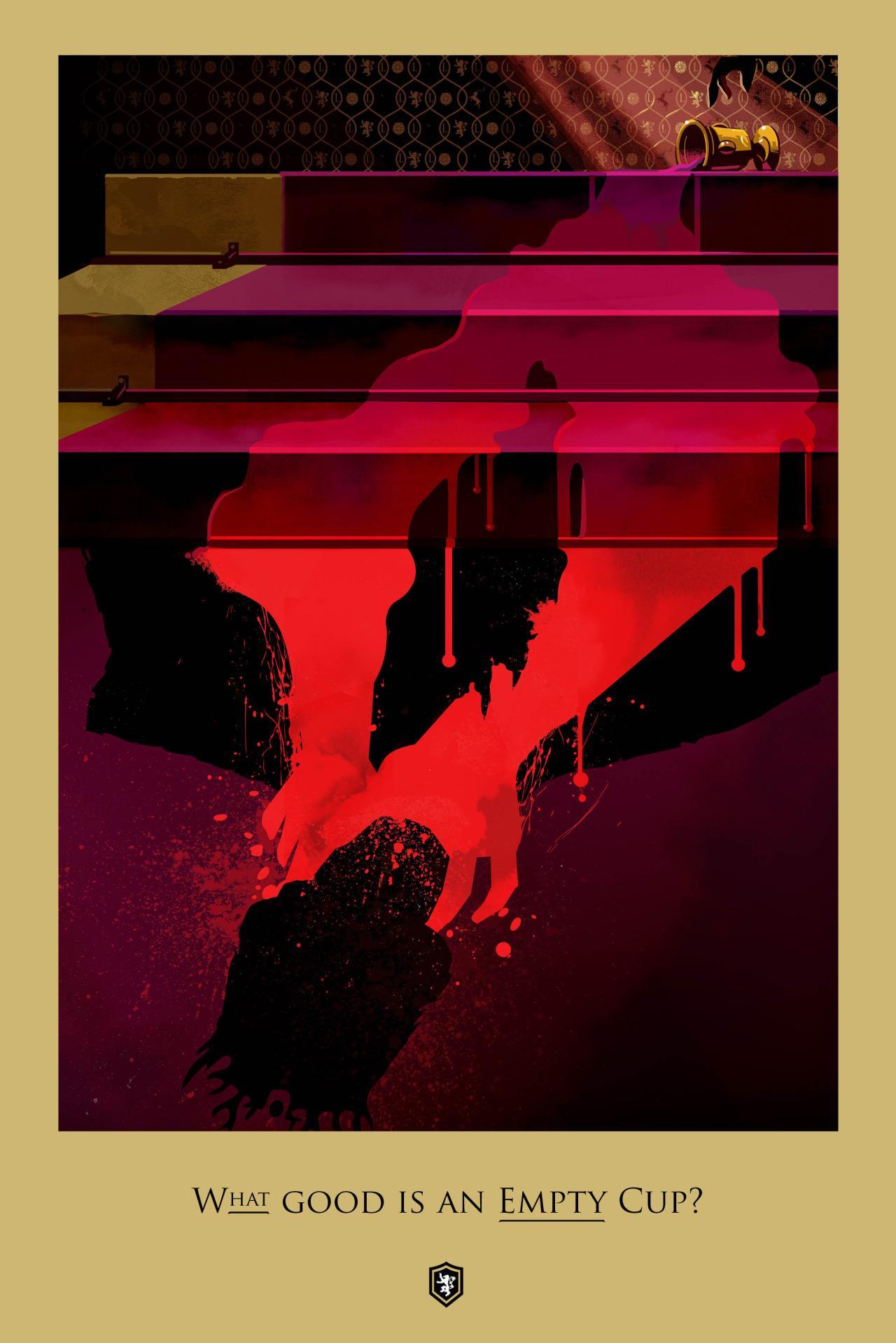
The post Game of Thrones Memory Lane 402: The Lion and the Rose appeared first on Watchers on the Wall.
Via http://watchersonthewall.com
No comments:
Post a Comment